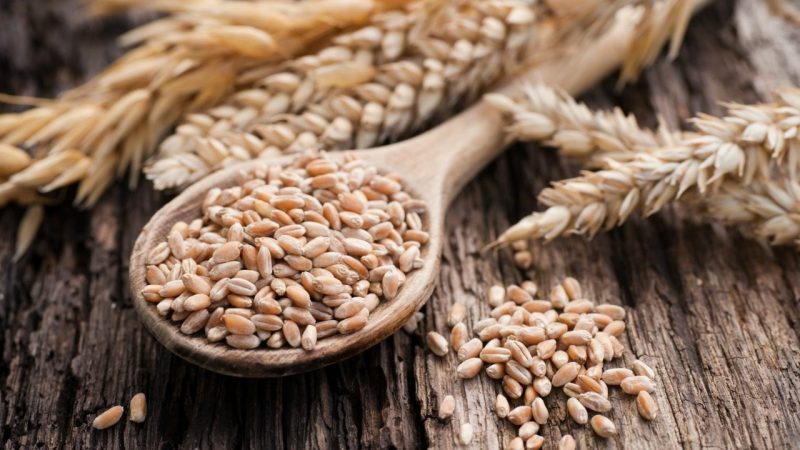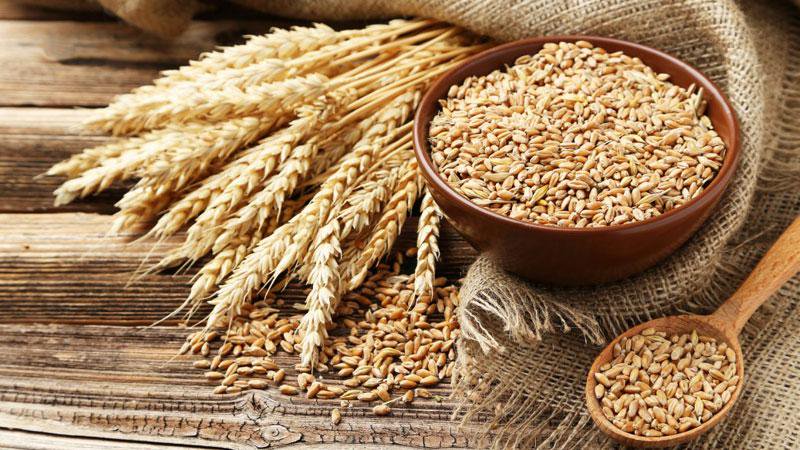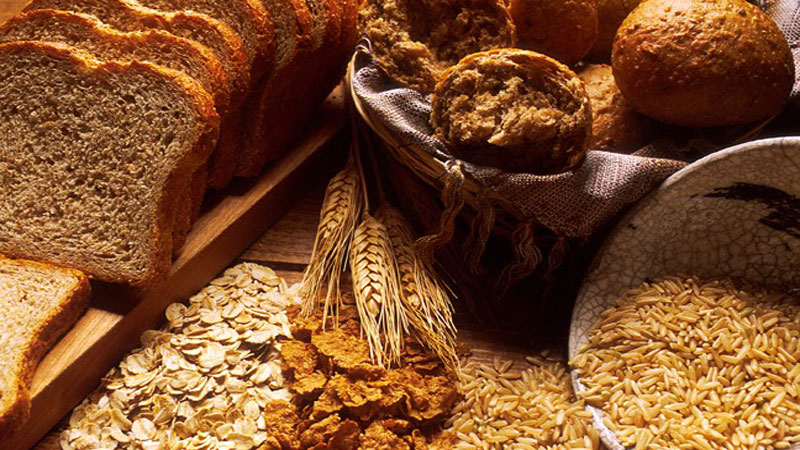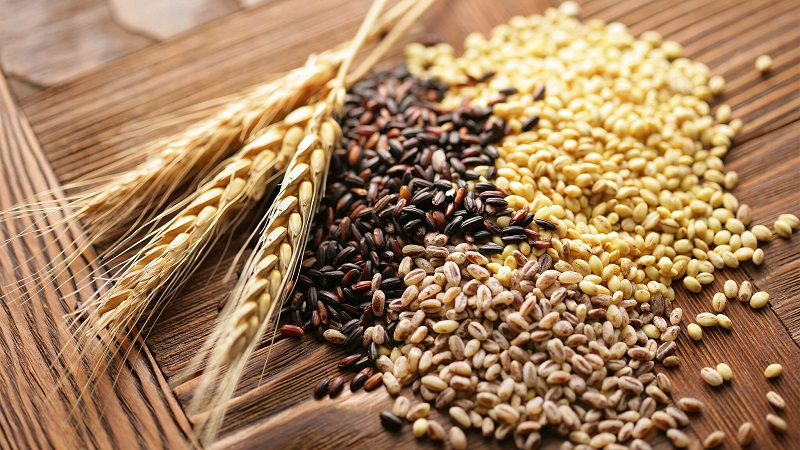What is made from rye and how is this cereal useful?
For several centuries, rye has been the main grain crop. Having absorbed the power of the earth and life-giving sunlight, she gave people a golden grain. This cereal is rich in harvest even in harsh weather conditions. It is not for nothing that linguists consider the Russian word "rye" to be derived from the verbs "to give birth", "to give birth".
Consider what kind of plant it is, what are its useful properties, what is prepared and obtained from rye and why our ancestors loved this cereal so much.
The content of the article
What is this cereal

This one- or biennial herb belongs to the bluegrass (cereals) family. According to scientists, cultivated rye (Sekale cereale) comes from weed-field rye (Secale segetale). In fact, this is its subspecies. The origin of plants of the genus rye is attributed to the Middle and Upper Tertiary periods of the Cenozoic era (55-23 million years ago).
Rye has a fibrous root system that penetrates 1-2 m deep into the soil. The plant stem is straight, hollow, with five or six internodes, pubescent under the ears. Reaches an average height of 80-100 cm. Each plant forms four to eight shoots.
Leaves are linear, 1.5-2.5 cm wide, grow up to 30 cm long. On the upper side, the leaf blade is covered with hairs.
During the growing season, the leaves and stem are bluish in color, during ripening they become golden yellow.
At the top of the stem is an inflorescence in the form of a drooping compound spike 5-15 cm long and 0.7-1.2 cm wide.
The fruit is an oblong weevil, laterally compressed, with a deep groove in the middle. After ripening, it easily falls out of the spikelet. The grain is white, greenish, yellow or dark brown. The weight of a thousand seeds is 25-55 g.
Rye is a cross-pollinated plant. Pollen is carried by the wind. Light wind and wet weather are favorable for pollination. Thin rye suffers from infertility or through grain (half-empty ears).
The plant is not very demanding on the soil, it feels good on acidic soils.
Rye is a frost-resistant crop. At the level of the tillering node (at a depth of 1.5-2 cm) it can withstand a drop in temperature to -19-21 ° C. Seedlings appear at 0.5-2 ° C.
A brief history of cultivation
The earliest archaeological finds of rye grains in Asia Minor date back to 2000 BC. e.
The advancement of agriculture to the north forced the ancient tillers to pay attention to the weed that accompanies wheat planting. Wheat did not grow in more severe conditions, and weed-field rye gave a rich harvest.
The early Iron Age (900 BC) is considered the time of the introduction of rye into culture on the territory of modern Eastern Europe. The first mentions of it are found in the annals of Ancient Rus, dating back to 1056-1115.
Over the course of a thousand years, the importance of culture has increased significantly. She became the main cereal for the population of Europe and Russia.
By the end of the 19th century, 30-60% of the sown area in Russia was allocated for rye, while wheat occupied less than 1%. Up to the middle of the twentieth century, rye, oats and barley remained the most widespread crops in the forest belt.
However, by 2000, the crop was ranked seventh in the world gross grain harvest, behind wheat, rice and corn. From 1981 to 2010, rye sown areas in Russia decreased by more than 80%. Rye grain production is only about 3.3 million tons per year (wheat is grown about 52 million tons per year).
The emergence of more perfect productive cold-resistant wheat varieties reduced the interest of farmers in rye, the varieties of which practically did not change.
Composition and KBZHU

Most of all, grains contain carbohydrates, as well as proteins, fats and dietary fiber.
Rye is rich in vitamins A, group B, PP. Grain contains calcium, magnesium, sodium, potassium and phosphorus. Of the trace elements, there are iron, copper, zinc, manganese.
The product contains choline, beta-carotene, nonessential and essential amino acids.
In terms of 100 g, nutrient content:
| Corn | Bread | |
| Proteins, g | 9,9 | 13,0 |
| Fat, g | 2,2 | 3,0 |
| Carbohydrates, g | 55,8 | 40,0 |
| Energy value, kcal | 283 | 250 |
Benefit and harm
Rye grains are used whole or crushed. Sprouted rye is popular as a source of vitamins and microelements.
Regular consumption of rye products strengthens the immune system, tones up and normalizes the functioning of the gastrointestinal tract. Thanks to the content of antioxidants, aging processes are slowed down.
Choline, which is part of cereals, lowers blood cholesterol levels.
Grains contain dietary fiber, so they promote quick satiety and weight loss. Fiber absorbs toxins and removes them from the body.
A large amount of calcium (24 mg per 100 g of grains) strengthens bones, teeth and nails. Due to the high content of potassium (510 mg per 100 g) and magnesium (110 mg per 100 g), rye products have a beneficial effect on the cardiovascular system.
Research shows that eating rye reduces the risk of breast cancer. People who regularly consume this cereal are less likely to suffer from cholelithiasis.
In Germany, Poland, the Scandinavian countries, rye products are classified as a healthy and dietary food.
The harm of rye to humans is due to individual intolerance. Proteins in its composition can cause allergies. Also, the use of ergot-infected rye leads to severe poisoning.
Contraindications
Rye in any form is contraindicated in case of gastric and intestinal ulcer, chronic gastritis, high acidity and exacerbation of diseases of the gastrointestinal tract. It should be borne in mind that fiber enhances intestinal peristalsis and can irritate the walls of the stomach. Do not eat rye products if you are allergic to cereal protein.
What is made from rye

The economic use of rye involves the production of flour, starch, alcohol and feed for farm animals.
Flour
There are three types of rye flour, depending on the production method:
- Seeded - finely ground, practically does not contain grain casings, is sieved. Has the lightest color. Suitable for various types of baked goods.
- Rough - before its production, most of the outer shells are removed from the grains, while most of the cells surrounding the embryo are preserved. The grinding is coarse, the product is non-uniform in particle size, contains remnants of the outer shells. Flour retains almost all the valuable substances of whole grains. It contains little gluten, so it is recommended to mix it with wheat.
- Wallpaper - the coarsest flour. To obtain, grain is used without any pretreatment. It is a dark gray powder with visible brown bran blotches. Retains the greatest amount of nutrients and dietary fiber.
Starch
Starch is made from rye grain, which serves as a full-fledged substitute for corn and wheat. It is used to obtain sugary products (molasses, glucose, glucose-fructose syrup) used instead of sugar in the production of soft drinks, confectionery and canned food.
Alcohol
Rye is rich in carbohydrates and serves as a valuable raw material for the production of ethyl alcohol. Ethyl alcohol "Alpha" is made exclusively from grain raw materials (wheat and rye).
Bran
Bran is a by-product of flour milling.It is a hard shell of grain. Rye bran is a valuable and nutritious feed for livestock, mainly for dairy and young animals.
Cereal dishes
How is rye used in cooking? First of all, bread is baked from it, as well as cereals, flat cakes and healthy drinks are prepared.
Porridge
It is recommended to eat rye porridge made from ground whole grains in case of diabetes mellitus and thyroid disorders.
It is prepared according to this recipe:
- 100 g of crushed cereals are thoroughly washed until the water becomes clear.
- 200 ml of salted water is boiled, the groats are poured and cooked over high heat for 5-7 minutes.
- Pour in 300 ml of milk and continue to cook over low heat until cooked for about 30 minutes.
- Add butter or vegetable oil to the finished porridge.
Interesting! What is the name of this porridge? Ancestors called her a brew, salomat or talker.
Sprouted rye cakes
For dietary nutrition, it is not difficult to make cakes from sprouted grains:
- Three glasses of sprouted grains are ground.
- Dilute this mass with water to the consistency of liquid sour cream, add a pinch of salt and 2 tbsp. l. rye flour.
- Bake in a dry non-stick frying pan.
Skans
This is a genus of rye cakes that were used as plates in ancient times.
Preparation:
- Mix 300 g of rye flour and 100 g of softened butter, add 300 g of fat sour cream, drive in two eggs, salt to taste and knead the dough. Flour is added if necessary. The dough should be very tight.
- Roll out the cakes and fry in a hot skillet with a little oil.
Rye kvass
Rye-based drinks enrich the body with useful substances and tone up.
To get kvass:
- 200 g of rye bread is cut into slices and dried in the oven.
- The obtained crackers are poured into 2 liters of boiled water and insisted for 6 hours.
- Add 100 g of sugar and 5 g of dry yeast.
- Leave the kvass in a dark place for two days to ripen.
Application in traditional medicine

For medicinal purposes, grains, flour, bran and even ears are used.
For bronchitis and cough, infusion of rye spikelets is used as an emollient. 2-3 st. l. raw materials are poured with 500 ml of boiling water and insisted for two hours. Drink 100 ml of liquid 3-4 times a day.
In case of abscesses, a chewed crumb of freshly baked salted rye bread is applied to the affected area and a gauze bandage is applied over it.
Bran decoction stops diarrhea. For this, 2 tbsp. l. the bran is boiled in 100 ml of water for 5-7 minutes. Drink a third of a glass three times a day before meals.
Rye bread, on the other hand, is used as a mild laxative.
Read also:
What is corn - is it a fruit, grain, or vegetable.
How to cook pickled tomatoes is delicious and simple.
We lose extra pounds easily and without hunger strikes on the "Rice Diet".
Conclusion
Until the middle of the twentieth century, rye occupied a leading position in the production of grain and flour. This cereal is less demanding on soil quality, heat and moisture than wheat. However, new and more productive wheat varieties have pushed rye out of the fields.
Products made from rye flour are low in calories and rich in nutrients, so they are often included in therapeutic and dietary food. Rye bread, bran and spikelets are widely used in folk medicine. Today rye porridge, bread and kvass have become rare guests on our table, however, rye products are still popular among adherents of a healthy lifestyle and proper nutrition. Diversify your diet with this useful and undeservedly forgotten cereal.